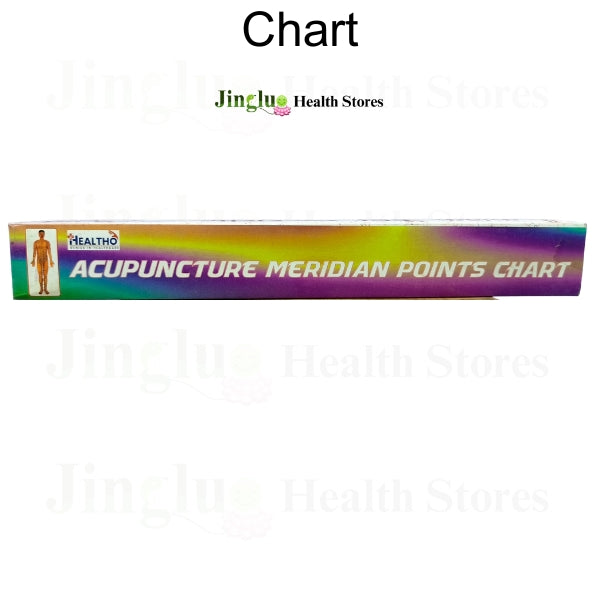1
/
of
1
Jingluo Health Stores
Acupuncture Meridian Points Chart
Acupuncture Meridian Points Chart
Regular price
Rs. 250.00
Regular price
Rs. 312.00
Sale price
Rs. 250.00
Unit price
/
per
Taxes included.
Shipping calculated at checkout.
Couldn't load pickup availability
Jingluo Acupuncture Meridian Points Chart is a detailed visual guide used by practitioners of acupuncture and Traditional Chinese Medicine (TCM) to identify the locations of acupuncture points on the human body. These charts are essential tools for understanding the energy pathways (meridians) and their connection to health and wellness.
Properties
- Material: Typically made from durable paper, laminated sheets, or displayed on scrolls, posters, or digital formats.
- Design: Features diagrams of the human body with precise markings of acupuncture points and meridians.
- Language: Often includes names and descriptions in English, Chinese, or Latin, with symbols indicating specific points.
Key Features
Anatomical Representation
- Front and Back Views: Provides a comprehensive view of the body, showing both anterior and posterior acupuncture points.
- Meridians: Maps the 12 primary meridians and 8 extraordinary meridians, essential pathways for energy (Qi).
- Acupuncture Points: Highlights the exact locations and numbers of points (e.g., LI-4, ST-36) for therapeutic use.
Additional Details
- Zang-Fu Organs: Connects specific meridians to internal organs for diagnostic purposes.
- Point Categories: Shows specialized points like command points, alarm points, and ear acupuncture zones.
- Illustrative Notes: May include explanations of energy flow and treatment benefits.
Uses and Benefits
For Practitioners
- Treatment Planning: Helps identify precise points for addressing various health concerns.
- Education: Serves as a reference for students and professionals in TCM.
- Diagnostics: Assists in correlating symptoms with specific meridian imbalances.
For Patients
- Visualization: Provides a clearer understanding of treatment areas.
- Empowerment: Educates patients about their body’s energy system.
For Wellness
- DIY Practices: Used for self-acupressure and understanding reflex zones.
- Integration: Combines with other holistic therapies, such as Sujok, reflexology, or cupping.
Types of Acupuncture Charts
- Body Meridian Chart: Displays full-body acupuncture points.
- Facial or Ear Charts: Focus on microsystems like auricular therapy.
- Hand and Foot Charts: Highlight reflex zones in these areas.
- Digital Versions: Interactive tools for modern practitioners and students.
Precautions
- Complexity: Should be interpreted by trained professionals to avoid incorrect point identification.
- Educational Use: Not a substitute for formal acupuncture training.
Additional Notes
- Portable: Charts are often foldable or rollable for ease of transport.
- Customization: Some charts are tailored for specific styles of acupuncture, like Japanese, Korean, or Five Element.
- Aesthetic Appeal: Often used as decorative and informative art in clinics
Share


